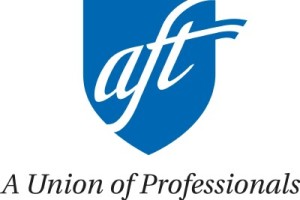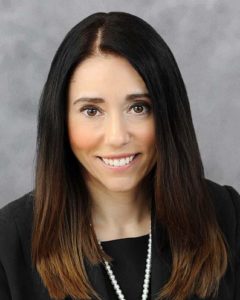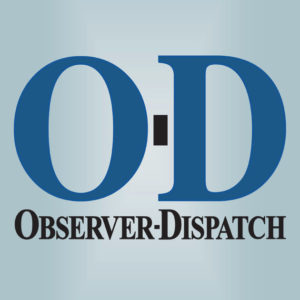The following article was written by Carol Burris, the award-winning principal of South Side High School in the Rockville Centre School District in New York. Please share far and wide.
On Monday, the New York State Board of Regents will meet to vote on the NYSED recommendations for changes to APPR.
If APPR was bad before (and it was) it is about to get considerably worse. Here is why:
Half of a teacher’s evaluation will be dependent on the performance of her students. For 3-8 teachers of Common Core English and/or mathematics, that rating (Ineffective, Developing, Effective of High Effective) will be either 100% dependent on Common Core tests, or 80% dependent on Common Core tests.
Some continue to claim that student performance is not half of the new evaluation. The latest attempt at such spin can be found in the newsletter of the New York State School Boards Association. The article’s assertion that student performance is not of equal weight to observation is misleading. The model has two components, which, if you interchange ratings on the matrix, produce exactly the same outcomes.
And yes, despite the article’s claim, the role of test scores has increased. In the previous model, a 3-8 teacher or principal could have an Ineffective growth score, but still be Effective overall. With the new plan, if a teacher or principal has an Ineffective growth score, she must be either Developing or Ineffective overall. Is there hope that the “other measures” can make a difference?
When you first read this statement, in slide 19, in the SED powerpoint, it sounds promising:
“If the optional student growth subcomponent does not involve additional traditional standardized tests (e.g., includes no additional testing or includes only Department-approved performance-based tasks), the required student growth subcomponent would be weighted at least 50% and the optional student growth subcomponent would be weighted no more than 50%, as determined locally.”
But then go back to slide 16 and see just what those optional measures you can locally choose would be:
- Computed by the State based on the percentage of students who achieve a State-determined level of growth on a State assessment (e.g., at least average for similar students). Such measures could incorporate multiple years of data.
- State calculated school-wide results based on the State-provided growth scores of all students in the school taking the grades 4-8 State ELA or math assessment.
- Locally-computed school-wide results based on all or a subset of State-provided growth scores.
In other words, the other measure that could count would be based on the same old Common Core state tests scores just sliced and diced a different way. That was expressly prohibited in the old law.
There would be one other choice. A district could pick a state-approved “other” test, as an additional measure, but the Regents plan says that it can only count for up to 20% of the student performance category, so that the growth score from the Common Core test would still have an overwhelming effect. And if a district chooses this option, teachers and principals risk a mandatory Ineffective overall rating if the Student Performance Component, which is 80% growth score, is Ineffective. The low percentage for the contribution of the other measure was the choice of SED.
High school teachers and teachers of the arts and physical education will still be able to have SLOs (for now) while the SED:
“Explore(s) with stakeholders and technical experts future assessment and metrics options, new covariates for the growth model, new high school growth metrics, multi-year growth models, possible adjustments to normative method todetermine HEDI ratings, and/or criterion-referenced measures of growth (slide 14).”
What does that mean? The ‘technical experts’ and stakeholders who are willing to go along with this nonsense, will be trotted up to Albany by SED to explore new made-up metrics and normative methods (translate bell curves) so that every teacher can get a state created growth score. Be still my heart.
There will also be mandated outside observations (10%), which will waste time, energy and taxpayer money. But never fear. Districts can save funds by allowing outside observers to watch videos of teachers. Maybe they can use the Craiglist Pearson graders who work for 12 dollars an hour. Post-observation conferences can be done via Snapchat.
Finally, there is the mandate that everything evaluated must be stuffed into “the observation cycle.”
That innovative unit plan you created? Teacher, don’t bring it to your end of year evaluation. Not allowed.
That project your students did this year that enriched their learning? See if you can grab your principal when she is in the hall in order to have a “natural conversation”.
Your outreach to parents? Maybe a “kids, I’m calling home tonight”, can be thrown into your video.
Here is the SED guidance:
“Teaching Standards/Domains that are part of the rubric, but not observable during the classroom observation, may be observed during a pre-observation conference or post-observation review or other natural conversations between the teacher and the principal/supervisor and incorporated into the observation score. Regardless, points shall not be allocated based on artifacts submitted to or reviewed by the evaluator outside of the observation cycle.”
And please do not even think about setting a professional goal. That is forbidden to be included in evaluation. There is only one goal—pump up those test scores.
It is embarrassing. SED guidance reads more like IRS regulation than professional guidance designed to help teachers improve.
At Monday’s meeting, seven Regents will put forth their own proposal, which, in essence, states that they refuse to sign on to this unethical and irresponsible evaluation system,…..”









Comments are closed.